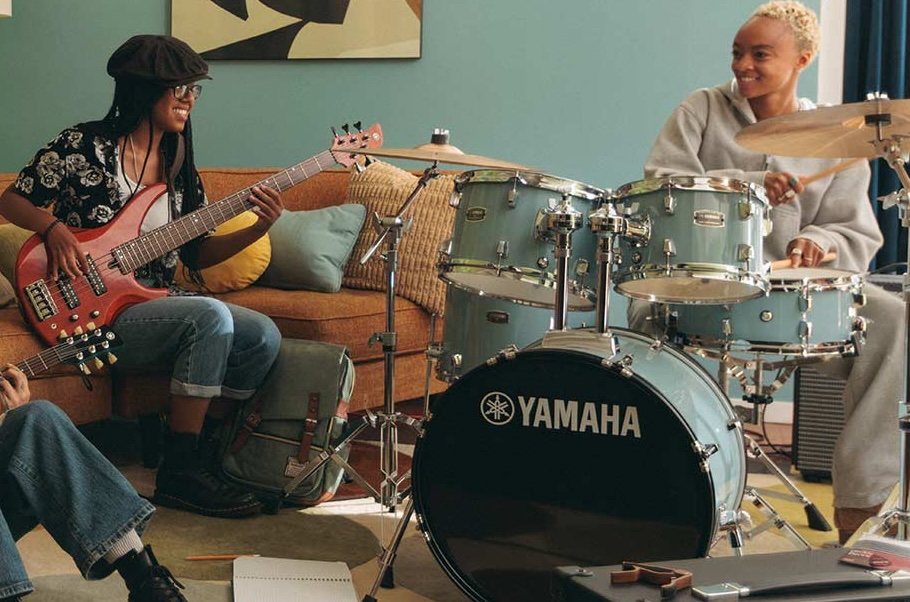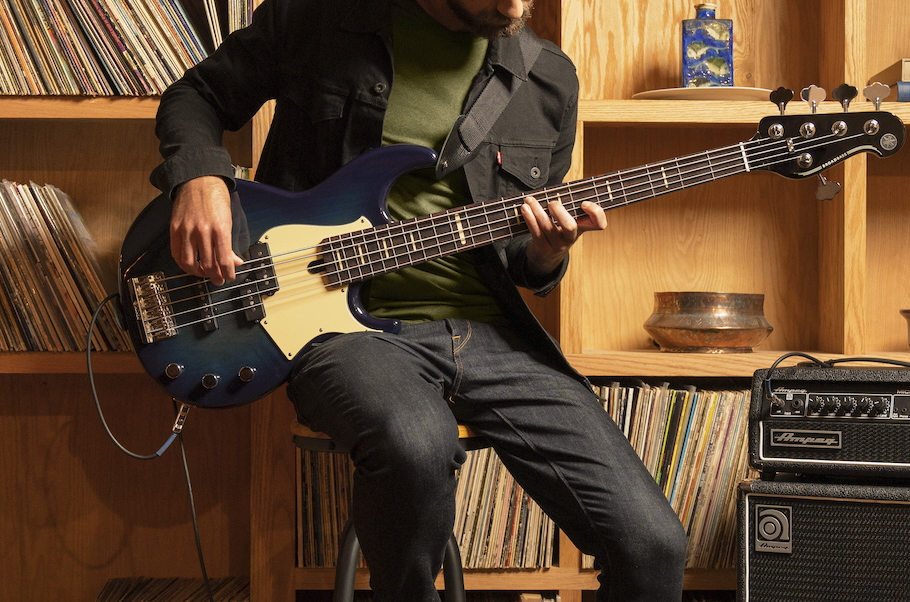Alternate Bass Tunings
It’s a great way to get fresh new sounds.
One of the fastest and least expensive ways to step out of your comfort zone and explore new territory is to change the way you tune your bass. Electric bassists have inherited E-A-D-G tuning from the upright bass, but there are many other options. In this posting, we’ll explore a number of them, but first, a little history.
STANDARD TUNING
Basses (and the bottom four strings of guitars) are tuned in fourths, which means that each string is four semitones apart. Most other stringed instruments, including cello, violin, viola, mandolin and tenor banjo, are tuned in fifths: Cellos and violas are tuned C-G-D-A, while violins and mandolins are tuned G-D-A-E.
In the 1800s, the upright bass was tuned in fifths, too, but many players found that this made it harder to shift positions. Today, acoustic bass players who have gone back to tuning in fifths say the strings have richer overtones and fit in better with the rest of the string section; they also find the interval of a tenth is easier to play. In addition, the C-G-D-A tuning gives them a low C without the special extender they’d need to use on a standard-tuned bass. (See the “Go Low” section below for more information.)
BE OPEN
Classical composers have been employing alternate tunings, which they called scordatura (“mistuning”) as far back as the 17th century. They prized being able to use the power and resonance of an instrument’s open strings, and when composers wrote in unusual keys or with nonstandard tonalities, they sometimes asked that string players adjust their tuning to play the composition. Many contemporary songs written on guitar, in fact, are in E, A, D and G because many of the notes in these keys can be played on open strings.
Another reason musicians re-tune their instruments is to make difficult parts easier to play; if a particular lick is a big stretch on adjacent strings, for example, tuning one of the strings up or down by a half-step makes it one fret easier to reach.
GO LOW
Some bass players outfit their instruments with piccolo bass strings designed to be tuned an octave higher than normal, yielding the same pitches as the lower four strings of a guitar. This can offer interesting possibilities in a solo context, but it’s safe to say that tuning down is more prevalent than tuning up.
One of the most common reasons to reasons to tune down is to access lower keys and go below a bass’s normal range. In metal and hard rock, many guitarists (and their accompanying bassists) tune down a half-step, use D standard (a four-string tuned down a whole step to D-G-C-F), C standard (C-F-B♭-E♭, a major third lower than usual) or B-E-A-D tuning (the standard tuning of the lowest four strings on a five-string bass) on a four-string.
But this kind of so-called “drop tuning” is hardly confined to metal. As far back as the 1980s, Anthony Jackson was tuning his bass down to C standard on sessions with Chaka Khan, and Ross Valory was using B-E-A-D tuning with Journey. In addition, many gospel and R&B bassists tune down to accommodate songs in flat keys.
The more strings you have, of course, the more options there are. Common variations on standard five-string B-E-A-D-G tuning include F#-B-E-A-D and E-A-D-G-C, and some gospel bassists tune their six-string instruments to A-D-G-C-G-B♭ for especially thunderous impact.
In these tunings, you can still use standard scale and chord fingerings, but that changes if you detune just one string. “drop D” tuning means lowering the E string to D and leaving all the other strings just as they are. To achieve this quickly during live performance, some bassists use an extender, a lever that can drop their E string as far down as B.
USE THE RIGHT STRINGS
With all these possibilities, it can be easy to forget that your bass is made of wood that expands and contracts. Lower tunings can work with a standard .45 – .105 gauge four-string set, but if you go all the way down to B-E-A-D, it’s simpler to use the lowest strings of a standard five-string set, with a low B that’s .125 gauge or thicker. Several companies sell heavier-gauge strings for down-tuning (.50 to .110, for example), lighter gauges for piccolo bass (such as .20 to .52) and mixed sets that can accommodate a wide variety of tunings. In rare cases, you might need to buy a single string that deviates from the rest of the pack.
TAKE IT TO A TECH
If you’re serious about exploring a substantially lower or higher tuning, I strongly suggest you take your bass to a professional tech who can tweak your truss rod, dial in your string height, check your intonation, and adjust your nut for new string sizes.
START SMALL
Experimenting is fun, but you can also be strategic: Can your lowest string match the lowest note of the song? Is there a passage that could be easier to play if you change the tuning of one or more strings? If tuning down to D standard feels too extreme, just tuning down the E string alone might do the trick. If you have more than one bass, consider keeping one bass in a particular tuning. For inspiration, listen to bass players like Michael Manring, who has explored alternate tunings more thoroughly than most.















